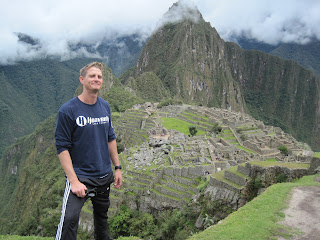A pre-Columbian 15th century Inca site located 7970 ft. above sea level and is situated on a mountain ridge above the Urubamba Valley. Most archaeologists believe that Machu Picchu was built as an estate for the Inca emperor Pachacuti(1438–1472). Often referred to as "The Lost City of the Incas", it is perhaps the most familiar icon of the Inca World. The Incas started building the "estate" around AD 1400 but abandoned it as an official site for the Inca rulers a century later at the time of the Spanish conquest. Although known locally, it was unknown to the outside world before being brought to international attention in 1911 by the American historian Hiram Bingham of Yale University. Since then, Machu Picchu has become an important tourist attraction.
Since the site was never known to the Spanish during their conquest, it is highly significant as a relatively intact cultural site. Machu Picchu was declared a Peruvian Historical Sanctuary in 1981 and a Unesco World Heritage Site in 1983. In 2007, Machu Picchu was voted one of the New Seven Wonders of the World in a worldwide internet poll. I was fortunate enough to have visited Machu Picchu twice while I was in Peru: the first time in July 2010 and again with my son when he came to visit in December. I enjoyed it equally as much the 2nd time since I saw things that I had missed the 1st time!
 |
| 6 AM Sunrise on the mountain |
|
 |
| Tame Llamas at the top of the mountain |
 |
| Enjoying the view |
 |
| A religious ceremony going on in the middle below; all dressed in white |
 |
| With Jenny from my TEFL class. |
 |
| With Jenny and her Peruvian husband, Walter |
The photos that follow are of Machu Picchu at the end of December with my son, Peter. As you can see, the climate was very different!
 |
| Foggy and wet at the top but then it cleared up! |




















No comments:
Post a Comment